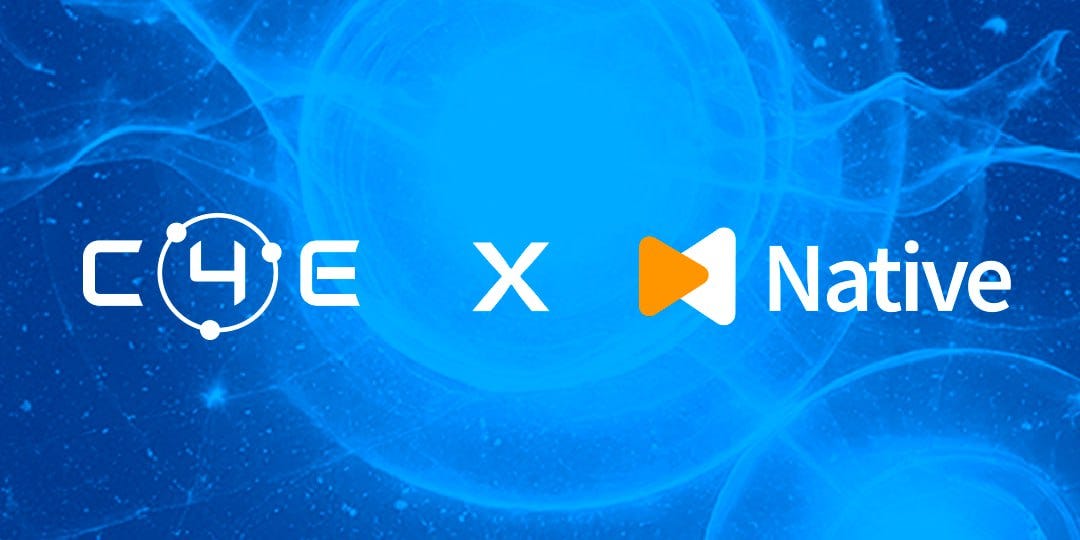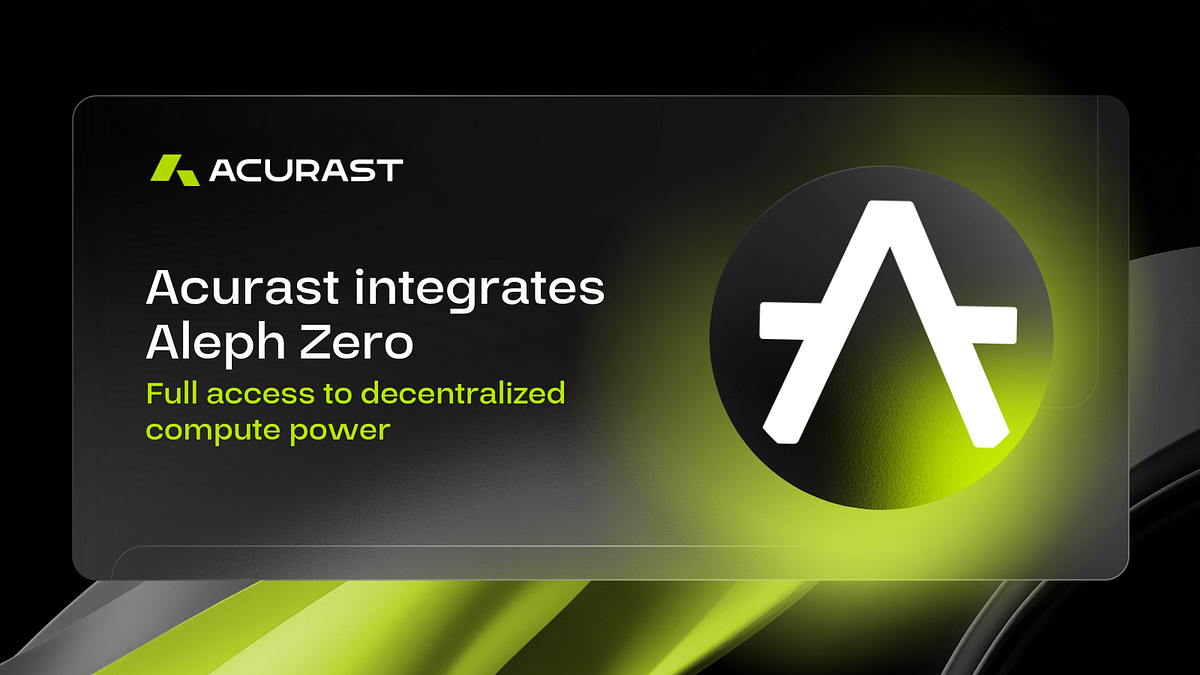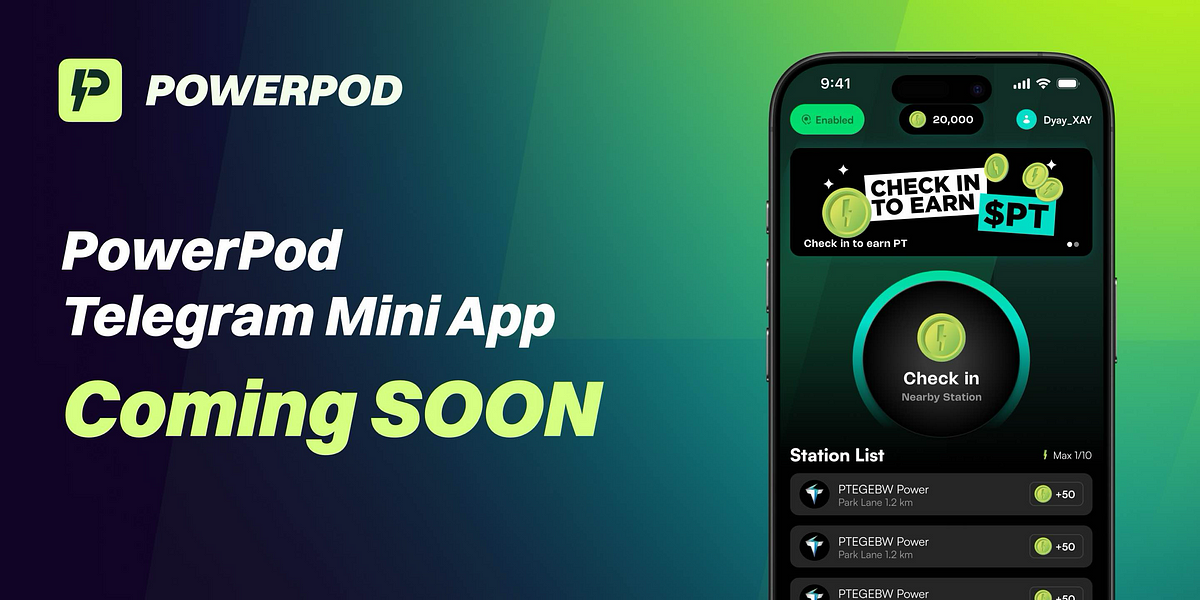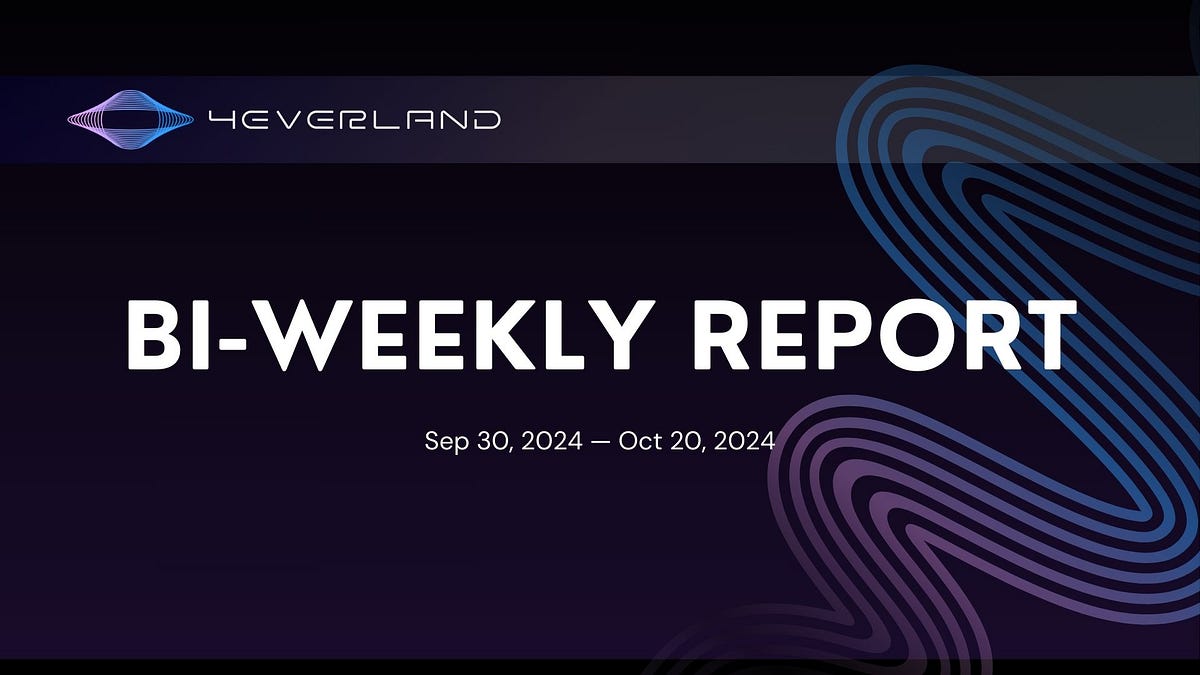Latest DePIN News

a year ago
C4E Partners with Native to Enhance Bitcoin Utility in Energy and E-Mobility
In a groundbreaking announcement, C4E has partnered with Native to enhance the utility of Bitcoin within its ecosystem. This collaboration leverages Native's Bitcoin Liquidity and Interoperability Scaling Stack (BLISS), which aims to integrate Bitcoin into C4E's energy and e-mobility products. By doing so, C4E seeks to empower Bitcoin as a valuable asset within its network while simultaneously contributing to the green transformation of both the Bitcoin and energy industries. The immediate focus will be on integrating BLISS with C4E's existing Layer 1 DePIN Blockchain infrastructure, enabling users to access native Bitcoin across the C4E and IBC ecosystems.
The integration of BLISS will allow C4E's energy and e-mobility products to benefit from Bitcoin's liquidity and security. Users will be able to engage in cross-chain transfers, manage multi-chain liquidity, and explore innovative use cases. This partnership marks a significant advancement in incorporating Bitcoin's robust security and liquidity into Cosmos-based applications, paving the way for staking services, collateral deployment, and advanced trading strategies within the C4E and IBC ecosystems.
Looking ahead, C4E plans to explore Bitcoin restaking, which would enable BTC holders to actively participate in securing the C4E and IBC ecosystems. This shift could transform Bitcoin from a passive store of value into an active participant in the security of interconnected chains. The introduction of these services is expected to create new financial primitives and unlock economic opportunities for Bitcoin holders, as well as for the broader C4E and IBC networks. Together with Native, C4E is committed to fostering a future where Bitcoin plays a pivotal role in decentralized applications and market dynamics, contributing to a more sustainable energy and e-mobility landscape.

a year ago
Helium (HNT) Shows Resilience with 12% Weekly Gain
Helium (HNT) has recently shown remarkable resilience in a generally bearish cryptocurrency market, gaining approximately 12% over the past week. As of the latest updates, HNT is trading at $6.88, having outperformed Bitcoin (BTC) and many other decentralized physical infrastructure (DePIN) tokens. This surge in price is attributed to increased buying pressure, as indicated by the Relative Strength Index (RSI) crossing above 50 for the first time in over two weeks. Additionally, network activity has spiked, with weekly fees reaching a three-month high, further fueling bullish sentiment among investors.
The technical indicators surrounding HNT suggest a potential for continued growth. The Moving Average Convergence Divergence (MACD) has shown a bullish shift, crossing above the signal line, although it remains in negative territory. This indicates that while there is growing strength among buyers, the overall trend has not yet fully reversed. The V-shaped recovery observed on the daily chart reinforces the notion that HNT is rebounding strongly after a previous decline. If the current buying momentum persists, HNT could reach the 1.618 Fibonacci level of $7.81, marking a complete recovery from its recent lows.
Moreover, the derivatives market is witnessing increased interest in HNT, with futures trading volumes rising by 60% and Open Interest climbing to its highest level in nearly three weeks. This uptick in speculative activity could lead to increased volatility in HNT's price. The Long/Short Ratio of 1.04 indicates a balance between long and short positions, suggesting that traders are cautiously optimistic about HNT's upward trajectory. Despite a positive crowd sentiment, it is noteworthy that smart money remains bearish, highlighting a divergence in market perspectives that could influence HNT's future performance.

a year ago
Crust Network Partners with Yoghourt Cloud to Enhance IPFS Functionality
Crust Network, a prominent player in decentralized storage solutions, has announced a new partnership with Yoghourt Cloud through its Crust Grants Program. This collaboration aims to enhance the functionality of the InterPlanetary File System (IPFS), thereby improving the scalability and usability of the decentralized web. Yoghourt Cloud, a decentralized storage platform that utilizes the IPFS protocol, will receive funding to support its development efforts. The grant will focus on optimizing storage and retrieval processes, ensuring faster and more reliable file access for users, while addressing key challenges in decentralized storage such as data availability and latency.
The objectives of this grant project are multifaceted. Firstly, Yoghourt Cloud plans to leverage Crust’s advanced storage architecture to develop more efficient storage management techniques for IPFS. This includes upgrading storage protocols and enhancing retrieval speeds to improve overall performance. Additionally, the integration of Crust’s decentralized storage capabilities into Yoghourt Cloud will provide users with a robust and scalable solution for their data storage needs. The project also aims to implement user-friendly upgrades, such as faster file uploads and smoother retrievals, which will enhance the overall user experience across the platform.
Crust Network's commitment to decentralized storage infrastructure for Web3 is further exemplified through this grant. By supporting innovative projects like Yoghourt Cloud, Crust seeks to make IPFS more practical and accessible to a broader audience. This partnership not only marks a significant step in improving decentralized storage systems but also aims to strengthen the IPFS ecosystem, benefiting a wide range of decentralized applications (dApps). Together, Crust and Yoghourt Cloud are set to drive the future of decentralized storage, exploring new possibilities and optimizing existing solutions for Web3 applications.

a year ago
Acurast Integrates with Aleph Zero to Enhance Decentralized Computing
Acurast has successfully integrated with Aleph Zero, allowing developers within the Aleph Zero ecosystem to access Acurast's decentralized compute resources while earning rewards in AZERO. This collaboration significantly enhances scalability, privacy, and cost-effectiveness for developers, enabling them to utilize unstoppable compute power directly from Acurast. By leveraging Acurast's mobile-powered cloud, developers can deploy applications more quickly, securely, and at a fraction of the cost compared to traditional cloud providers. This integration aligns perfectly with Aleph Zero's privacy-first architecture, ensuring enhanced security and data protection for decentralized applications (dApps).
The integration has been hailed by key figures from both organizations. Alessandro De Carli, Co-Founder of Acurast, expressed excitement about the collaboration, emphasizing how it empowers developers to access scalable and confidential compute resources. He noted that this partnership marks a significant step toward reducing the reliance on centralized cloud providers, thus promoting the benefits of decentralization and privacy. Piotr Moczurad, Ecosystem Tech Lead of Aleph Zero, echoed these sentiments, stating that Acurast's decentralized cloud service is a perfect complement to Aleph Zero's focus on privacy, speed, and scalability. This collaboration aims to create an environment where Web3 developers can deploy and scale their applications without compromising security or performance.
Aleph Zero is recognized for its privacy-centric blockchain solutions that prioritize speed, data confidentiality, and ease of development. It utilizes zero-knowledge proofs to uphold rigorous data protection standards while providing a versatile toolset for Web3 development. With over 40 active use cases, Aleph Zero showcases its adaptability across various sectors. Acurast, on the other hand, transforms upcycled mobile devices into a decentralized cloud computing platform, offering a cost-effective and efficient alternative to traditional cloud models. Together, these two platforms are poised to revolutionize the landscape of decentralized computing and application development.

a year ago
Introducing PowerPod: The Future of EV Charging
As electric vehicles (EVs) gain traction in the automotive market, the necessity for a robust charging infrastructure has become increasingly apparent. Many EV drivers encounter significant challenges, such as locating functional chargers, navigating outdated information, and enduring long wait times. These obstacles not only frustrate drivers but also pose a threat to the widespread adoption of green transportation solutions. Addressing these issues is crucial, and our innovative approach aims to streamline the EV charging experience through a community-focused platform.
Introducing the PowerPod Telegram mini app, a transformative tool designed to revolutionize how EV drivers find and utilize charging stations. With this app, users can easily check in at nearby charging locations, receive real-time updates on charger availability, and identify operational stations. This eliminates the frustration of arriving at broken chargers or waiting in long lines. The app fosters a community-driven environment where users can share vital information regarding wait times, charger conditions, and personal experiences, creating a supportive network of EV drivers that enhances the overall charging experience.
As the popularity of EVs continues to surge, improving the charging experience is essential for motivating more individuals to transition to green transportation. PowerPod is committed to enhancing this experience by providing drivers with the necessary tools to locate reliable chargers and stay informed. By empowering users to make smarter decisions on their journeys, we are contributing to a sustainable future, one charge at a time. Stay tuned for the launch of our app and join the PowerPod community to earn rewards for checking in at stations along your travels.

a year ago
4EVERLAND Bi-Weekly Report: Exciting Developments and Future Plans
In the latest edition of the 4EVERLAND Bi-Weekly Report, the project has showcased significant advancements and community engagement over the past two weeks. Notable developments include the introduction of new features such as Telegram login support on the 4EVERLAND Dashboard and the integration of advanced large language models like GPT-4o-mini and Llama 3.2 into the 4EVERLAND AI RPC. Additionally, the 4EVER Boost Webpage and Telegram Mini App have seen enhancements with the launch of the "Mystery Code" feature and an Invite Module that rewards users for bringing in new participants. These updates are part of 4EVERLAND's strategy to enhance user experience and foster community growth.
The report highlights impressive user growth, with 198,307 new users joining the platform, marking a significant milestone. Total transactions reached 132,549, and the number of active users stands at 28,603. The global node distribution ensures high availability and low latency, further solidifying the operational capabilities of the project. Community activities, such as the Template-a-thon Challenge and the 4EVER Boost Campaign, have also contributed to the platform's engagement, allowing users to earn rewards through participation and contributions.
Looking ahead, 4EVERLAND is focused on continuous improvement and expansion. Upcoming plans include technical upgrades to enhance performance and security, as well as collaborations with additional projects to broaden the ecosystem. The team is committed to strengthening community interactions and actively seeking user feedback to drive future developments. With these initiatives, 4EVERLAND aims to create a vibrant and innovative Web3 experience for its users, ensuring a promising future for the project.

a year ago
Blockchain's Role in Promoting Environmental Sustainability
In recent years, the urgency of addressing environmental issues has led to the exploration of various technologies aimed at reducing humanity’s carbon footprint. Among these technologies, blockchain, a decentralized and transparent digital ledger, has emerged as a potential solution for fostering a more sustainable environment. While blockchain is often associated with cryptocurrencies and high energy consumption, its underlying technology offers opportunities for environmental protection, from decentralized energy grids to incentivizing eco-friendly behaviors. This article explores how blockchain is being applied to environmental challenges, examining projects that are actively working towards reducing carbon emissions, promoting transparency in supply chains, and rewarding individuals for their contributions to sustainability.
One of the most vivid examples of how blockchain can help create a sustainable environment is through decentralized energy grids. These grids allow individuals and businesses to generate, share, and trade renewable energy such as solar and wind power without needing a centralized utility provider. Blockchain technology ensures that these transactions are transparent, secure, and efficient, enabling participants to track energy production and consumption in real time. A standout example is Power Ledger, an Australian blockchain-based platform that facilitates peer-to-peer energy trading, reducing reliance on non-renewable energy sources and promoting a cleaner energy future.
Blockchain technology is also making significant strides in ensuring supply chain transparency, which is essential for building a sustainable environment. Many industries, including fashion, food, and electronics, are adopting blockchain to track products from raw materials to the consumer. Provenance, a blockchain platform for tracking product origins, helps companies demonstrate their commitment to sustainability. By providing verifiable data about a product’s entire journey, Provenance empowers consumers to make informed choices that contribute to a sustainable environment. As blockchain evolves, its role in fostering sustainability may prove to be one of its most impactful applications.

a year ago
Auki's Posemesh: A Decentralized Network for Machine Perception
Auki is pioneering the development of the posemesh, a decentralized machine perception network designed to bridge the gap between humans, devices, and AI for the next 100 billion users on Earth and beyond. This innovative network aims to create an external sense of space that machines and AI can utilize to collaboratively comprehend the physical world. With 70% of the global economy still reliant on physical locations and labor, Auki's mission is to enhance civilization's intercognitive capacity, enabling better problem-solving and experiences in conjunction with AI.
The posemesh introduces several features aimed at improving various sectors. For retailers, it addresses the critical challenge of product placement and shelf space allocation, providing insights that enhance operational efficiency. In property management, the posemesh facilitates clear communication and asset tracking, ensuring that issues are promptly identified and resolved. Furthermore, for events, it offers precise positioning and shareable navigation links, transforming how visitors navigate spaces and maximizing their experiences through augmented reality (AR) maps.
Auki emphasizes the importance of privacy in its decentralized approach, ensuring that no single organization can capture or monitor private spaces. By allowing users to contribute to AI’s understanding of the world while retaining ownership of their data, the posemesh represents a significant step towards making the world machine-readable. This initiative not only supports the AI revolution but also addresses the inherent challenges and dangers associated with data privacy in spatial computing.

a year ago
Bittensor (TAO) Shows Bullish Potential Amid Market Consolidation
Bittensor (TAO) has recently captured the attention of traders and investors, particularly as it has experienced a notable 20% increase this month. Despite a 10% decline over the past week, the token's performance indicates a bullish outlook for the longer term. TAO has successfully broken out of an inverted head and shoulders pattern, surpassing the $600 level before entering a consolidation phase. Traders are now closely monitoring the $500 zone, as a bounce from this level could signal further upward movement if market conditions align favorably.
As traders navigate the current market dynamics, many have mistakenly interpreted the recent price action as a sign of a bearish trend. This has led to an influx of short positions, which may have backfired as TAO's price surged, trapping these shorts. Currently trading around $560, TAO's return to breakeven levels may prompt trapped traders to exit their positions, potentially triggering a bounce. The token's recent pullback to the $500 range is viewed as a short-term buying opportunity, with analysts suggesting a bullish convergence on the 4-hour chart could lead to a price target of $800 by 2025.
Despite the optimistic long-term outlook for Bittensor, traders remain cautious due to some weakness indicated by the MACD. If TAO loses support, it could dip below the $500 mark again. Nevertheless, Bittensor continues to rank among the top AI and Big Data projects, alongside notable competitors like Near Protocol, Oasis, and The Graph. This strong positioning in the market suggests that Bittensor is well-equipped to recover from recent corrections and may see further gains in the coming months, making it a project to watch closely for potential investment opportunities.

a year ago
CUDIS Launches Mini App to Enhance Health Data Management and Privacy
CUDIS, a pioneering company in the realm of wearable technology, has recently launched the CUDIS Mini App integrated with World App, a platform co-founded by Alex Blania and Sam Altman. This new app aims to enhance the interaction with health data while addressing privacy concerns associated with AI. The integration utilizes World ID, a secure protocol that allows individuals to prove their uniqueness online without compromising their privacy. Edison Chen, CEO of CUDIS, emphasized that this collaboration showcases the potential of blockchain technology in transforming personal health data management, making it more secure and user-friendly.
In conjunction with the Mini App, CUDIS is introducing a limited edition wellness ring designed specifically for World ID holders. This sleek ring features a portable battery cartridge and improved fitness tracking capabilities. Users of the World App can engage with the CUDIS Mini App without needing to purchase the ring, as they can earn CUDIS points through various activities such as signing up, participating in sports challenges, and interacting with a personalized AI coach. This initiative not only promotes healthy habits but also incentivizes users with cryptocurrency rewards for their engagement.
The CUDIS Mini App leverages World’s proof of human verification technology to ensure the legitimacy of shared biometric data. This facilitates secure access to health resources and promotes genuine human interactions. The launch of this app was announced during World’s “a new world” event, which reached an audience of 15 million users. CUDIS aims to empower individuals by allowing them to own and potentially monetize their health data, fostering a healthier generation of smart ring users.
Signup for latest DePIN news and updates